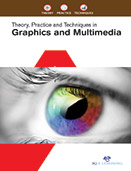Computer Science

Multimedia is the use of the computer to present and combine text, graphics, audio and video with links and tools that lets the user to navigate, interact, create and communicate. There has been a steadily growing interest in multimedia systems research over the last decade. While there was initially a lot of activity in a few popular areas like video-on-demand, video segmentation and content-based image retrieval, the range and depth of interest has expanded tremendously since then. In the early days, the focus in multimedia was on images in the early 1990s and by mid-1990s, multimedia was synonymous with video. Audio has almost evolved separately until recently. There have even been sporadic discussions on the merits and demerits of looking at a single media versus multiple media. However, it has now more or less been accepted that different applications and different needs call for the use of different media. For example, text streams would not have been considered being multimedia a decade ago. However, it is accepted today as a necessary mainstream ingredient in many multimedia applications such as in the analysis of news video. Over the forty-year history of interactive computer graphics, there have been continuous advances, but at some stage this progression must terminate with images being sufficiently realistic for all practical purposes. How much detail do we really need? Polygon counts over a few million imply that on average each polygon paints less than a single pixel, making use of polygon shading hardware wasteful. We consider the problem of determining how much realism is required for a variety of applications. Display resolution has remained largely constant in spatial terms for the last twenty years and in terms of the number of pixels has increased by less than an order of magnitude.
“Theory, Practice and Techniques in Graphics and Multimedia” explores the parameters of the application, problems and solutions related to digital disciplines. This book equips the readers with all the basic and advanced concepts of computer graphics and multimedia. It offers solutions to the challenges of storage and manipulation of a variety of media types providing data placement techniques, scheduling methods, caching techniques and emerging characteristics of multimedia information.